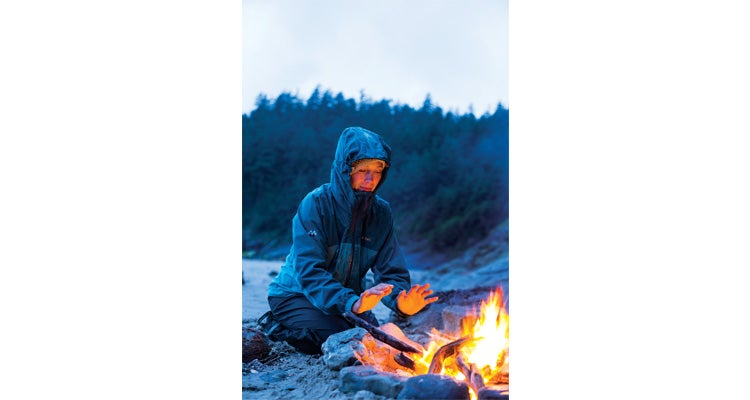How to Make a Fire in the Rain

'Warming up in famously soggy Oregon. Photo by Justin Bailie'
Get out of the elements
Find a sheltered location that will help you stay dry and warm, like against a rock face or in a grove of trees. In gusty weather, dig a pit for your fire to sit in—the stronger the wind, the deeper your pit should be.
Start small
Create a dry tinder bundle of fibrous material, like the shredded cambium layer of a tree (the part just under the bark) or the fluff of milkweed or cattails. If you’re not sweating, keep the bundle inside your clothes while you collect the rest of your wood—your body heat will help dry it.
Plan ahead
Collect more wood than you think you need—you don’t want to have to leave your fire. Make your fire structure no more than shin-high to conserve fuel, and store wet wood near your flames to dry it out.
Make a solid base
“Get the fire structure off of the wet surface,” says Hobel. Lay down a raft-like foundation of wrist-size sticks.
Build your structure
Hobel recommends the teepee—start with pencil lead-thick twigs (look for the dry dead branches at the base of evergreens) and add layers of progressively larger sticks. If possible, place your tinder bundle inside the structure and light it there.
Ignite it
Light your teepee with a fire starter that will catch even when wet. Look for birch bark or pine pitch on the trail, or carry a bag of cotton balls covered in Vaseline. Always be prepared with multiple methods of lighting a fire (matches, flint and steel, etc.). Keep a lighter in your pocket in addition to in your pack—they work best when they’re warm.